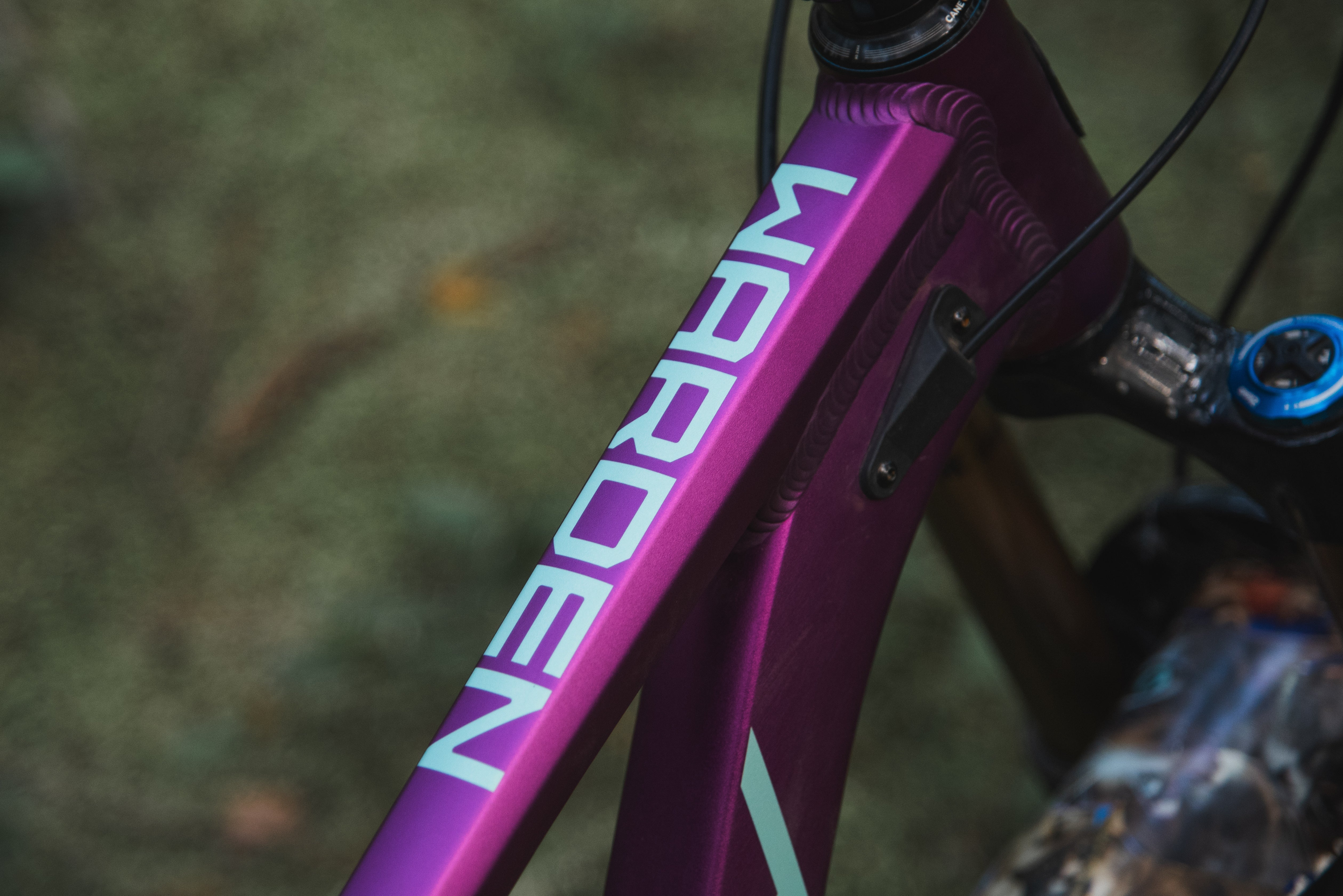
A couple hallmarks of the Knolly aesthetic are its frame design, the non-clear coated raw alloy finish, and the anodized treatment on some models vs paint.
Why anodizing?
Because it’s cool and not many bike brands do it.
We at Knolly love durable bikes and timeless unique finishes; and anodizing is one of those finishes that fits our ethos. Anodizing ensures a part can resist corrosion and wear and tear from prolonged use, and that it retains its cosmetic appearance under any conditions. All our linkages have always been hand polished (yes by hand) to prepare for anodizing process, while this is not inexpensive (because of all the handling), we believe in a durable part that doesn’t lose its appearance and is easy to clean. The anodizing process is slightly more costly than the paint process as there is more handling and science involved.
How does anodizing work?
It’s SCIENCE!!!!

Anodizing is one of the steps in manufacturing aluminum machined parts and tubes. It is an electrochemical process that involves coating a metal part with an oxide surface layer; anodizing gives the part additional sturdiness and a more attractive finish.
To anodize our frames and linkages, we connect it to a positive terminal of an electrical circuit, also called an anode. We then submerge the part in an acidic electrolyte bath that contains chemical compounds, like sodium phosphate, which fill the bath with positive and negative ions.
A cathode or the negative end of the circuit is connected to a metal electrode in the bath and voltage is sent through the circuit. The negative electrode attracts positive ions from the cathode part, and the aluminum anode part attracts negative O2 ions from the solution.
When positive aluminum ions leave the frame or linkage part’s surface, it reacts with the negative O2 ions to grow a layer of aluminum oxide which becomes the color finishing of the frame and part.
The quick and dirty on how anodizing works:
- Frame or linkage becomes an anode with a positive charge
- Plates of different metals become a cathode with a negative charge
- Submerge both the anode and cathode an acidic bath
- Different electrolyte baths for different colors
- Apply voltage which
- Time and amount of voltage affect color density
- Removes aluminum ions from the frame/linkage, creating pores
-
Attracts oxygen ions to the part’s surface which forms a hard, corrosion-resistant aluminum oxide layer becoming the color finish
*For brevity, this is a very simplified version of the process. There are many resources online that break down the process to its minute details.
Why mostly black or dark frames?

The raw alloy frame has been a staple finish in all our models and during early Knolly days in the 2000s anodizing was just the thing to do. But there was constant variability in depth of color due to anodizing facilities not being super sophisticated, except with black. With that, we also found a paint facility that provided amazingly durable and colorful paint for our frames that were not raw or black anodized.
We have been using black anodized as our dark finish for years because of the fear of inconsistency in anodizing. Colorful anodizing has historically yielded inconsistency because of the electrolyte bath and voltages and different batches of anodizing had different color depth. Additionally, welds on our frames use a different alloy in the welding stick which causes the anodizing to be an ever so slightly lighter color than the frame - we feared that consumers would notice and be upset about this.
Today

Few high end alloy bike brands use anodizing because it’s more costly than paint and even fewer use colors other than black because of the possible variability in color results. But typical Knolly-style, we do things differently. In the last two seasons we’ve been experimenting with slightly brighter colors, going from black anodizing, to bronze (which is found on the newest Fugitive), and to the purple LTD ED Warden offered this season - a throwback to some of the 1990s mountain bikes colors.
We’ve reached out to riders and ambassadors, and all the feedback about the color inconsistency at the welds (that we at Knolly have been worried about) isn’t a big concern. Riders want a uniquely finished frame that stands out from the rest of the other brands that is durable as well.
We’ll keep experimenting with different anodized colors and pushing the envelope of how we can make our bikes unique along with our patented suspension.
**Did you know that we hand pick welded frames with little to no surface blemishes to go be hand scotch-brite'd to sell as raw bikes and also to go to the anodizing process? Frames with surface blemishes caused by greasy hands or weld slag go through the primer and paint process.



Comments
Can I get a pink frame with a black rear triangle?
Great to understand the WHY for the anodizing… Makes me happy my new DH rig coloring should last the distance!!